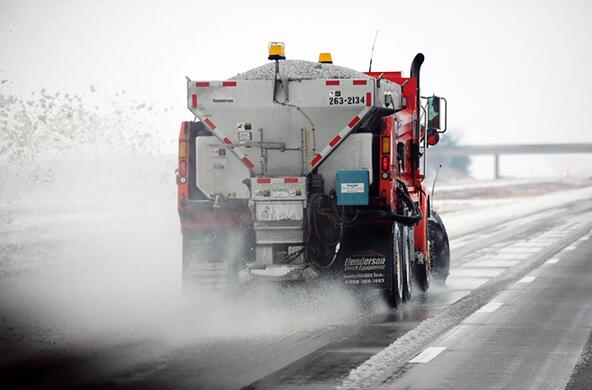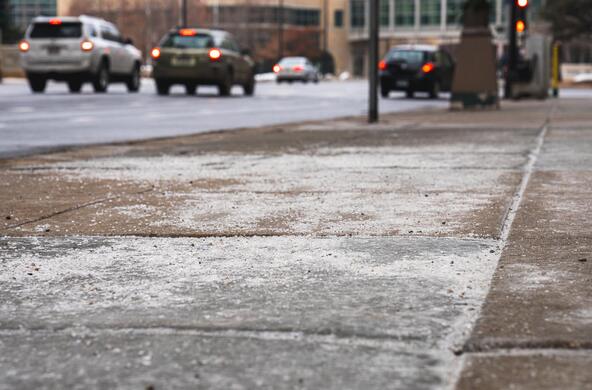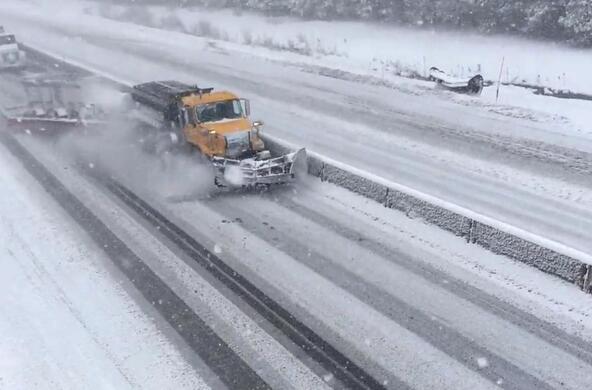Salty waters linger year-round, compromising drinking water supplies.
Road salt keeps winter roads safe, but it doesn’t go away when winter ends. We are identifying long-term trends in freshwater salinization from local to continental scales to better understand the fate of salt in the environment and the legacy effects of salt pollution.
The problem
- Much of the salt applied to roads runs off into nearby lakes, rivers, and streams. It also filters into groundwater.
- Salt pollution accumulates in groundwater and surface waters, where it can persist for decades.
- Salty water interacts with soils, rocks, and pipes – mobilizing contaminants and degrading freshwaters.
We are exploring...
- The legacy of salt retention in the environment
- How salt retention is tied to landscape features
- How weathering of rocks and metals by road salt compromises water quality
Our discoveries
Salt is retained within watersheds to a much greater extent than was previously realized. Concentrations have been increasing over time, even in watersheds without new roads.
Moreover, summertime levels can be as high as in the winter – meaning that organisms are exposed to high concentrations during their active and reproductive periods. Salt retention in watersheds means that management action intended to reduce salt levels may take some time to show the desired effect.
“More than 30 years of monitoring a tributary of the Hudson River has revealed that 90% of the salt in the stream comes from road salting. Salt levels are consistently higher in summer than in winter. This is a sign that road salt remains in the environment long after the last snow.” – Stuart Findlay
With colleagues, Cary’s Gene Likens has been part of research exploring freshwater salinization syndrome in rivers and streams throughout the US.
This occurs when salty, alkaline freshwaters release chemicals, including toxic metals and harmful nitrogen-containing compounds, from streambeds and drainage basin soils. These chemicals can travel through watersheds, forming 'chemical cocktails' that can have more devastating effects on drinking water supplies and ecosystems when compared with individual contaminants alone.
Lead in pipes, solder, and joints is not uncommon, especially in our older cities. These pipes are vulnerable to saltier, more alkaline water, which can release toxic metals, such as lead, and other contaminants.
Gene Likens





